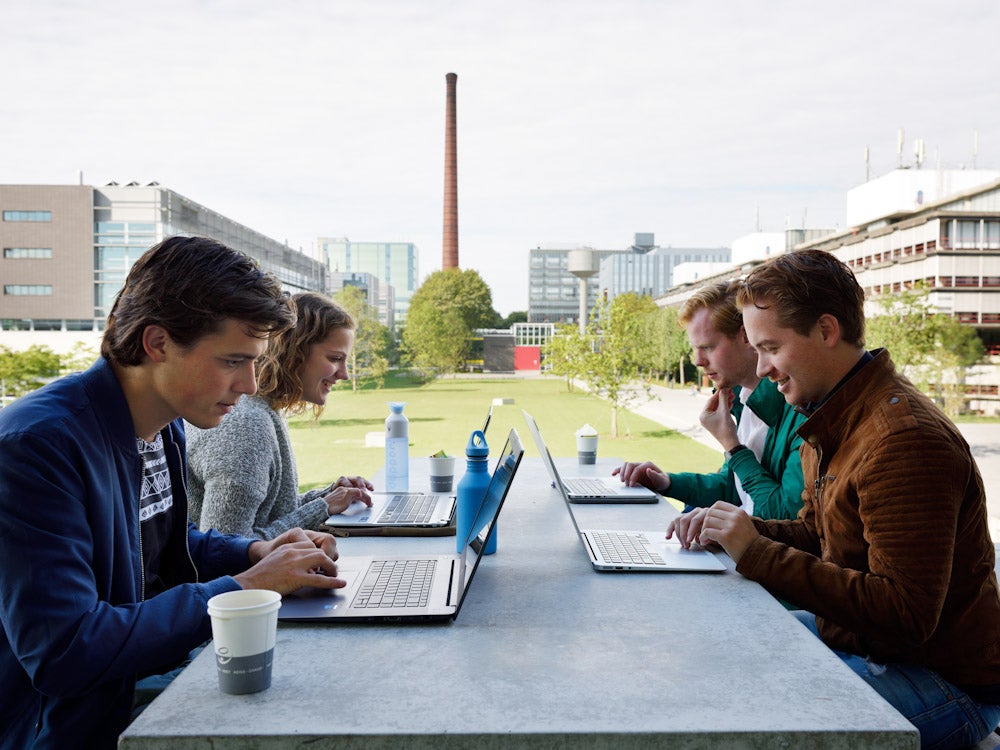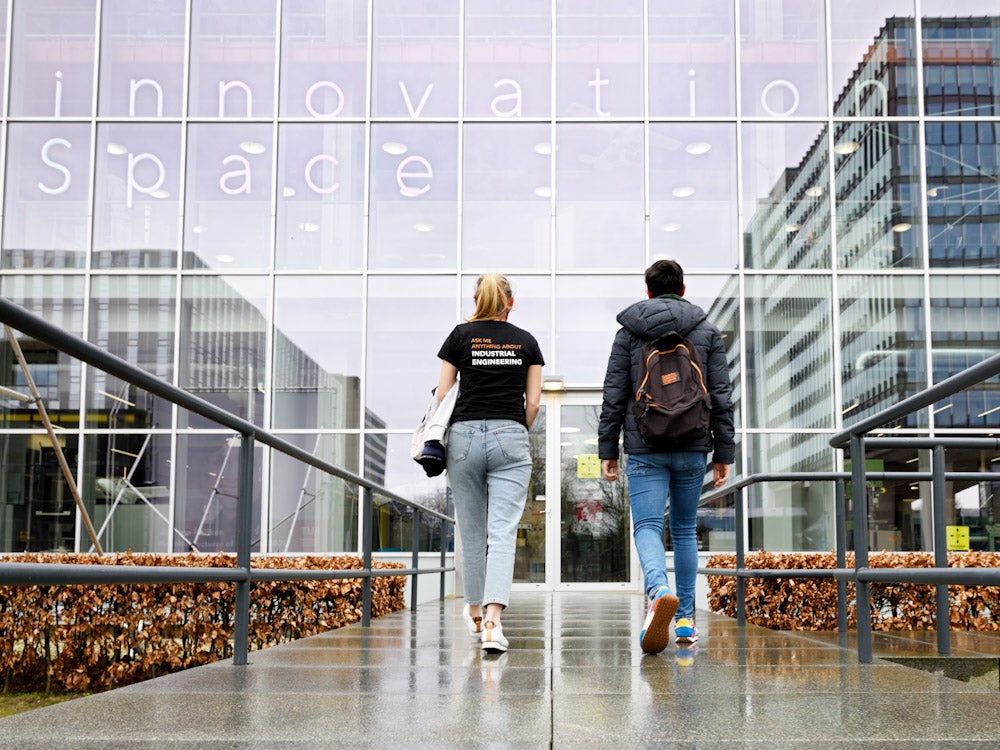
Brabant has a reputation for being where any technological component, complex machine or advanced system can be invented, designed, manufactured and commercialised. There is a good reason why it is known as the smartest region in the world that generates numerous new ideas every day – and it all comes down to a commitment to cooperation that drives innovation.
Electronics manufacturer Philips is often credited for kick-starting the tech revolution in Brabant, with global chip equipment manufacturer ASML a highly successful spin-out of the company. Yet the Netherlands province has a rich industrial heritage that stretches back hundreds of years, which the tech industries now continue.
Businesses, government organisations and technical universities share their expertise and resources in Brabant to make advances in technology, with progress taking priority over profits in the crucial development phase. However, there comes a point when projects must start making money to justify the investment.
Nevertheless, this cooperation model differs noticeably from the standard outsourcing model and the free-market mindset that has dominated Western policy for more than four decades. Proof of the effectiveness of the cooperation model is that Brabant generates 20% of the Netherlands’ total GDP.
High levels of cooperation with so many partners in Brabant create a robust supply chain, providing a layer of protection against the instability of global markets.
Using cooperation to achieve technological advances is epitomised in Brabant by Brainport Industries. Established almost 11 years ago, Brainport Industries is a cooperative network organisation consisting of 120 companies and educational institutions, all working together to enhance innovations and competitive strengths through projects focused on people, technology and markets.
“You cannot do everything on your own. You also need the capabilities and the competencies of your peers in the region,” says John Blankendaal, managing director of Brainport Industries. “The sense of trust, confidence, sharing your risk but also sharing profits, is one of the strengths of the ecosystem.”
Blankendaal explains that while it is not possible to match China in terms of low costs in manufacturing, other strengths compensate for this.
“We cannot compete on price, but we can compete on value – and if we want to compete on value, then we have to cooperate,” he says.
Expanding cooperation to advance manufacturing
Brainport Industries’ growth over the past decade has been exponential, having started with only seven companies to meet the needs of original equipment manufacturer partners. It now forms a complete supply chain. Suppliers connect to solve problems facing customers.
Edwin van der Weele is the business development of Brainport Industries Campus’ Factory of the Future Experience Centre. He explains how pooling resources opens up new opportunities for businesses and expands what they can offer OEMs.
“It is all about cooperation and synergy,” adds van der Weele. “A lot of suppliers in that supply chain of the big OEMs are specialists in narrow fields. So, you need to cooperate with other suppliers to innovate together and produce for the big OEMs, which have high standards, high needs and require very high tech.

“We can fly a helicopter on Mars. So, almost everything’s possible but never by only one company. Nowadays, it is not about the winning company but about the winning supply chain.”
An example of how Brabant is nurturing the future of innovation is its technical universities. Brainport Industries Campus has facilities dedicated to high-tech manufacturing, while the Automotive Campus focuses on advances in vehicles and motoring. Universities not only provide a safe environment to experiment with lower risk, but they also have students that will contribute to the future workforce and ultimately become industry leaders.
“We wanted to create a campus where you can add value above the square metres you are renting or leasing to those companies and institutions,” adds Blankendaal.
At present, activities take place on a site covering 100,000m2, yet this is now expanding with the development of a second building that will be double the size to 200,000m2.
“We started with the idea of a Dutch Manufacturing Institute or an Institute for Precision Technology,” says Blankendaal. “Then we said: ‘If we want to be successful, then we should put education, innovation and manufacturing under one roof’.”
Technologies that will further enhance Brabant’s capacity to build any machine or component are 3D printing of metals and robotics and AI to fill the shortage of workers. Projects for these essential solutions for industry 4.0 are taking place across Brainport Industries Campus.
“3D metal printing is done a lot on Brainport Industries Campus,” adds van der Weele. “You see the possibilities to print metal objects in all kinds of weird shapes that you could never produce in another way by normal metal machining.
“But I also see robotics in logistics. In my work, I look at a lot of factories and always see people moving stuff. That will be taken over by automatic guided vehicles. I think it is a great innovation for the coming years.”
Collaborate to innovate in tech
The culture of collaboration to enhance innovations in tech and manufacturing extends throughout Brabant. Another example is Gate2, which formed around the same time as Brainport Industries Campus in 2011. It is a smart industry innovation hub with a mission to connect innovators.
As with Brainport Industries Campus, Gate2 also encourages collaboration between businesses and academic institutes. Specialist areas include digitalisation, technologies for advanced manufacturing, smart working and related products, as well as servitisation. These are all part of the Netherlands’ Smart Industry Strategy.

Gate2 focuses on developing new technologies, performing feasibility studies and prototyping. Additionally, it offers business development and financial planning support, which help start-ups grow and scale up their operations.
The site has a dedicated field lab for the predictive maintenance of industrial machines through AI, and Gate2 is also home to the Netherlands’ first Cyber Physical Factory (CPF), which enables SMEs to team up with educational institutions to develop advanced industrial innovations.
At the CPF, SMEs can access a suite of advanced technologies they would likely otherwise be unable to afford. Technologies include AI, augmented and virtual reality, robotics, digital twins and connected machines via the internet of things. For example, businesses can experiment to see if robotics and AI can improve their production processes. These capabilities enable innovations to be thoroughly tested and proven before entering the market.
“This allows you to experiment and see what happens within a highly flexible manufacturing environment,” explains Pierre van Kleef, director of Gate2 and program manager of Midpoint Brabant Smart Industry. “So, you can really design your process for customised products and change your manufacturing process in a very fast mode. You also collect the data from your manufacturing with very high efficiency.
“So, it is basically applicable for any sort of manufacturing where you can utilise all these new technologies. Especially for the small and medium-sized companies, it is a very good way to see how it works and is connected, and how you can optimise your production.”
What enables rapid data transfer at the facility is the 5G network, with Gate2 acting as a testing ground. The network was built on campus by communications giant Ericsson, which has a facility near Gate2, and the considerable speed of 5G is vital for machine-to-machine communication.
“We have the 3.5 gigahertz connectivity in place because Ericsson Telecommunication has a big presence here,” adds van Kleef. “That allows you to transfer a big amount of data in real-time so you can experiment with communication between machines.”
Innovators and leaders in Brabant are continually developing initiatives that maintain its position as a top location in the world for high-tech manufacturing – and for Brabant, the future is clearly in more collaboration.


